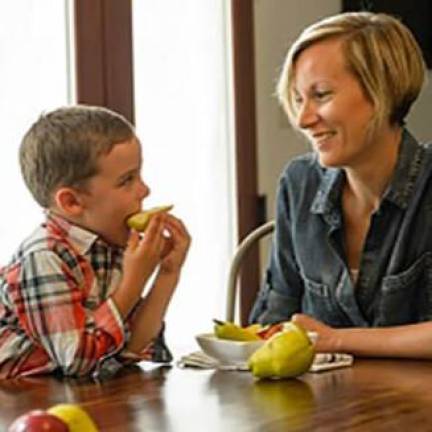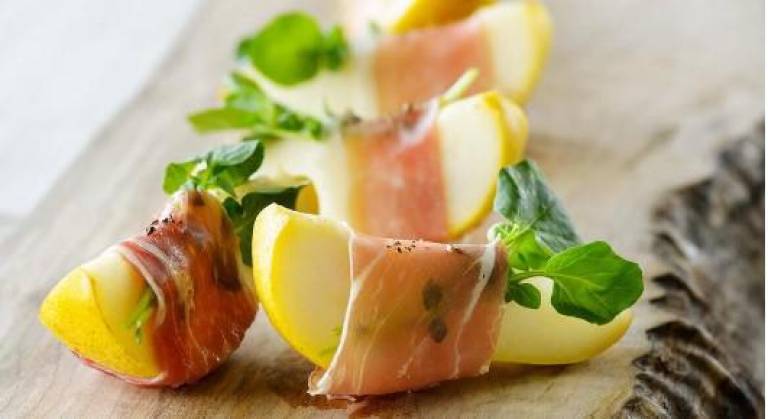Pears Make a Perfect Winter Snack


Peaches say summer. Apples fit fall. Pears are a winter wonder.
Pears are a nutrient-dense, fat free food, an excellent source of fiber, and have vitamin C for only 100 calories per serving. “Pear snacking is healthy and can help fill you up and keep you satisfied,” says the trade group USA Pears.
True, a five-ounce fresh pear has nine more calories than a five-ounce apple but look what the pear packs into those calories: 25 percent more protein than the apple, 30 percent more dietary fiber, and 40 percent more iron. There’s also 136 percent more folate, the heart health B vitamin. That may be why a few years back, when nutritionists at Tufts university in Boston combed through the data from 22 different studies, they discovered that eating two pears a day for 12 weeks actually lowered the subjects’ high blood pressure, a risk factor for cardiovascular disease.
Happily, America’s pears are in season from early fall right through February. Most come from Washington, Oregon, and California where they are picked and packed mature but not ripe, which is to say, still hard to the touch and teeth. That’s to prevent deposits of the dietary fibers lignin and cellulose from clumping into “gritty” particles in the flesh of the fruit.
To ripen your pears once you bring them home, tuck them into a brown paper bag or sit them in a bowl at room temperature. You’ll know they’re ready when the fruit yields slightly if you press gently with your palm or fingertips. But no rough stuff, please. Bruise a pear or slice it and you break cells releasing pollyphenyloxidase, a naturally occurring enzyme that hastens the combination of oxygen in the air with alcohols in the fruit, producing flesh-darkening brownish stuff. Savvy cooks protect sliced pears (or apples) by dipping them into an acid solution such as lemon juice and water or vinegar and water or by tossing the slices with citrus fruit such as oranges whose vitamin C is a natural antioxidant.
And in a world driven by snacks, pears are a terrific choice. Half of all eating occasions in the country are now snack driven, according to USA Pears citing a recent Mintel report on snacking which found that 94 percent of Americans snack at least once a day. “Thirty-three percent say they are choosing healthier foods this year compared to last year,” and it reports “millennials are leading the way and are more likely than any other demographic to snack multiple times throughout the day.”
But before you go consider this important note. Like apple seeds and peach pits, pear seeds contain amygdalin, a sugar compound that breaks down to hydrogen cyanide in your stomach. Humans or pets won’t be harmed from ingesting a single seed occasionally, according to a Garden Guides article on fruits that can be poisonous but swallowing a large number of seeds can cause reactions ranging from choking to a stomachache and to a potentially fatal illness. Easting seeds of any of the above fruits could be particularly dangerous concentration for a child. In other words, enjoy the pear. Skip the seeds.
For more pear pointers, check out the Pear Bureau Northwest athttps://usapears.org/about/ or the California Pear Board at http://intl.calpear.com/industry/about-the-pear-board/ or Pears USA at https://usapears.org/In other words, enjoy the pear. Skip the seeds.